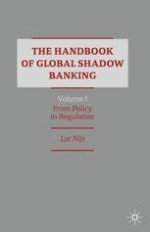2020 | OriginalPaper | Buchkapitel
12. An Interim Conclusion: Shadow Banking as Market-Based Financing
verfasst von : Luc Nijs
Erschienen in: The Handbook of Global Shadow Banking, Volume I
Aktivieren Sie unsere intelligente Suche, um passende Fachinhalte oder Patente zu finden.
Wählen Sie Textabschnitte aus um mit Künstlicher Intelligenz passenden Patente zu finden. powered by
Markieren Sie Textabschnitte, um KI-gestützt weitere passende Inhalte zu finden. powered by
